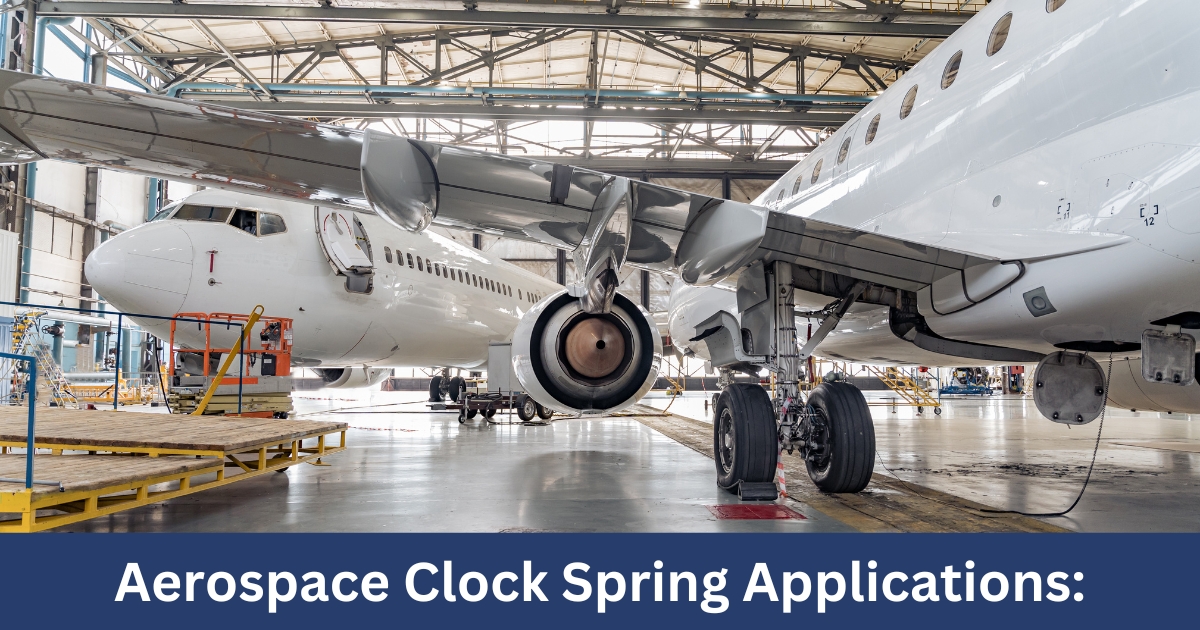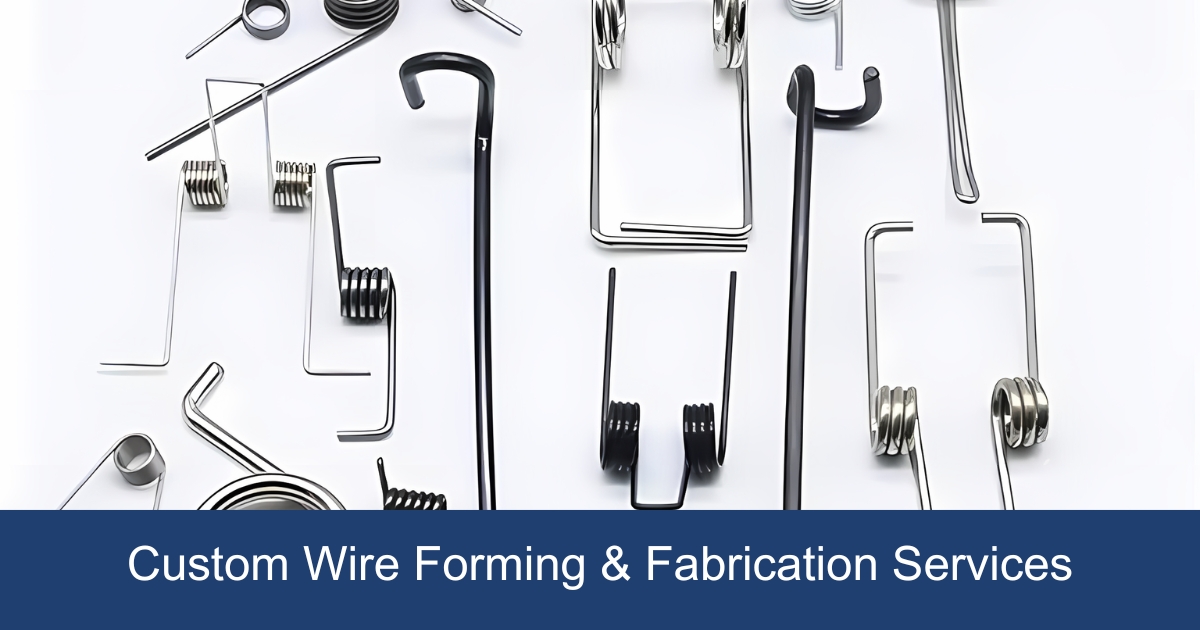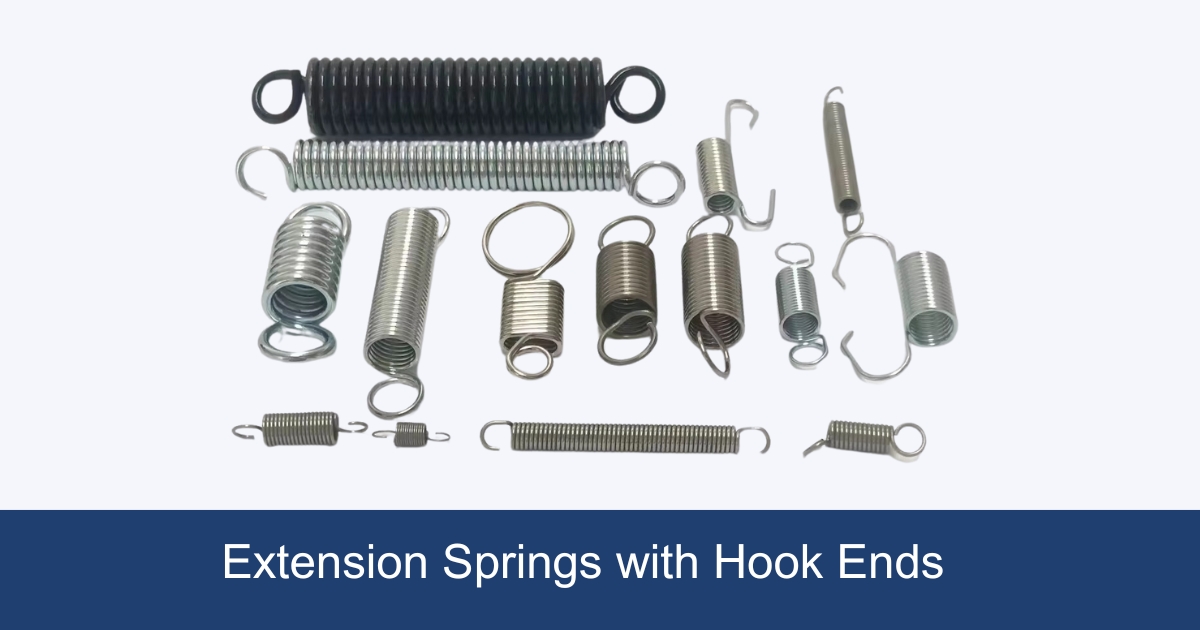Venturing into the realm of custom wire forms is an intricate journey, demanding knowledge of materials, design, and manufacturing. This guide is your compass, aimed at navigating the complex decisions to transform your vision into reality. Let’s embark on the initial steps of this adventure.

Section 1: Designing Custom Wire Forms
Designing custom wire forms is both an art and a science, requiring careful consideration of materials, dimensions, and prototyping techniques. This section delves into the initial considerations crucial to the custom wire forming process and explores rapid prototyping methods that bring ideas to life quickly and efficiently.
Material Selection
Choosing the right material for your custom wire forms is foundational to achieving the desired performance and durability. Factors such as environmental exposure, mechanical stress, and the wire form’s application significantly influence material selection. For instance, stainless steel offers corrosion resistance for medical devices, while high-carbon steel might be preferred for its tensile strength in automotive suspension components. The choice of material impacts not only the wire form’s functionality but also its manufacturing process and final cost.
Wire Diameter and Form Factor
Selecting the appropriate wire diameter and form factor is crucial for balancing the wire form’s strength and flexibility. The wire diameter affects the wire form’s ability to withstand load and stress, while the form factor — the shape and design of the wire form — determines how well it can perform its intended function. Considerations include:
- Load Bearing Capacity: Thicker wires offer greater strength, important for structural components.
- Flexibility and Bendability: Thinner wires may be necessary for applications requiring high flexibility.
- Manufacturability: Complex shapes may require specific wire thicknesses to be manufacturable without compromising integrity.
Rapid Prototyping
Rapid prototyping is a key step in the custom wire forming process, allowing designers and engineers to quickly iterate and refine their designs based on real-world testing and feedback.
Techniques and Technologies
- 3D Printing: While not directly used for metal wire forming, 3D printing can create precise plastic prototypes of wire forms for fit and function tests.
- CNC Wire Bending: Advanced CNC wire bending machines can quickly produce wire form prototypes directly from CAD models, offering a fast turnaround for testing physical properties and application fit.
- Laser Cutting and EDM: For complex shapes or precision cutouts within wire forms, laser cutting and EDM (Electrical Discharge Machining) provide high accuracy in prototype development.
Benefits of Rapid Prototyping
- Speed: Rapid prototyping significantly accelerates the design cycle, allowing for quicker adjustments based on testing.
- Cost Efficiency: By identifying design flaws early, rapid prototyping reduces the cost of later-stage revisions and avoids costly production errors.
- Stakeholder Engagement: Physical prototypes offer stakeholders a tangible understanding of the wire form’s functionality and appearance, facilitating more informed decision-making.
Section 2: Common Materials Used in Wire Forms
Steel
- Properties: Steel, particularly carbon steel, is known for its high tensile strength and durability. It can be hardened and tempered to various degrees, offering a range of strength and flexibility options.
- Applications: Carbon steel wire forms are widely used in automotive, construction, and industrial applications where strength is a primary concern.
Stainless Steel
- Properties: Stainless steel adds chromium to the mix, offering excellent corrosion resistance in addition to strength. It’s less prone to rusting and staining compared to carbon steel.
- Applications: Due to its resistance to corrosion, stainless steel wire forms are ideal for medical devices, food processing equipment, and marine applications.
Aluminum
- Properties: Aluminum stands out for its lightweight properties, good corrosion resistance, and conductivity. It’s softer and more malleable than steel, making it easier to work with for certain designs.
- Applications: Aluminum wire forms find their place in electrical applications, consumer electronics, and any application where weight is a critical factor.
Factors to Consider For Selecting the Right Material
- Environmental Exposure: The material’s resistance to elements such as moisture, chemicals, and temperature extremes is crucial, especially for outdoor or harsh environment applications.
- Strength Needs: The required tensile strength and flexibility depend on the application’s load-bearing and bending requirements.
- Cost: Material cost can significantly impact the overall project budget. Balancing cost with performance needs is essential in material selection.
- Manufacturability: Some materials are more challenging to machine, bend, or weld, influencing the complexity and cost of the manufacturing process.
Section 3: The Manufacturing Process
1. Material Selection
- 1.1 Identifying the Right Material: The process begins with choosing the appropriate material, considering factors like strength, flexibility, corrosion resistance, and application environment. Popular choices include various grades of steel, stainless steel, and aluminum.
- 1.2 Sourcing Quality Materials: Partnering with reputable suppliers ensures the raw material meets the necessary standards for quality and consistency, which is crucial for the performance of the final wire form.
2. Wire Preparation
- 2.1 Wire Drawing: This involves reducing the diameter of the wire to the required thickness while maintaining its strength and ductility. The process must be carefully controlled to prevent defects.
- 2.2 Cleaning and Straightening: Prior to forming, the wire is cleaned to remove any surface contaminants and straightened to ensure uniformity in the forming process.
3. Forming and Bending
- 3.1 CNC Wire Bending: Utilizing CNC (Computer Numerical Control) technology allows for precise and repeatable bending, crucial for complex shapes and tight tolerances.
- 3.2 Manual Adjustments: For certain applications, manual bending might be necessary to achieve the desired form, especially for prototype development or small production runs.
4. Joining Techniques (if applicable)
- 4.1 Welding: Some wire forms require welding to join multiple pieces or to add additional components. Techniques such as spot welding, MIG, and TIG are selected based on material and design requirements.
- 4.2 Other Joining Methods: In some cases, alternative methods like soldering or the use of fasteners may be employed to achieve the desired structural integrity.
5. Finishing Processes
- 5.1 Coatings and Platings: To enhance corrosion resistance, aesthetic appeal, or electrical conductivity, wire forms may undergo various finishing processes, including zinc plating, powder coating, and anodizing.
- 5.2 Polishing and Cleaning: These final steps ensure the wire form meets all specifications for surface finish and is free from manufacturing residues.
6. Quality Control and Testing
- 6.1 Dimensional Inspections: Precision measuring tools are used to verify dimensions and tolerances, ensuring the wire form meets the design specifications.
- 6.2 Performance Testing: Depending on the application, wire forms may undergo stress, fatigue, and load testing to confirm their durability and functionality.
7. Packaging and Shipping
- 7.1 Custom Packaging Solutions: To prevent damage during transport, wire forms are carefully packaged. This often involves custom solutions to protect against bending, scratching, or other forms of damage.
- 7.2 Shipping Coordination: Efficient logistics are crucial, especially for time-sensitive projects, requiring coordination with trusted carriers to ensure timely delivery.
Section 4: Coatings and Finishes
The final steps in the production of custom wire forms involve the application of coatings and finishes. This crucial phase not only protects the wire forms from environmental wear and tear but also enhances their performance and aesthetic appeal.
Importance of Coatings and Finishes
Enhancing Durability
- Corrosion Resistance: Coatings such as zinc plating or anodizing protect the wire form from rust and corrosion, crucial for applications exposed to harsh environmental conditions.
- Wear Protection: Finishes can significantly reduce the wear and tear on wire forms, extending their functional lifespan.
Improving Performance
- Electrical Conductivity: Certain coatings can enhance electrical conductivity, making wire forms suitable for electronic applications.
- Friction Reduction: Some finishes are designed to reduce friction, improving the wire form’s performance in mechanical assemblies.
Aesthetic Enhancement
- Visual Appeal: Aesthetic finishes such as powder coating offer a wide range of colors and textures, allowing for customization that matches branding or product design requirements.
- Surface Finish: Coatings can provide a smoother surface, improving the tactile quality and overall look of the final product.
Options for Coatings and Finishes
Plating Processes
- Zinc Plating: Offers corrosion resistance and is cost-effective, suitable for many industrial applications.
- Nickel Plating: Provides a hard and wear-resistant surface with a bright finish, enhancing both the aesthetics and durability of wire forms.
Powder Coating
- Process Overview: Electrostatically applied powder is cured under heat to form a hard finish that is tougher than conventional paint.
- Benefits: Powder coating is highly durable, available in a vast range of colors, and environmentally friendly, making it a popular choice for both protection and aesthetics.
Anodizing
- Application to Aluminum: Anodizing is particularly relevant for aluminum wire forms, creating a corrosion-resistant surface that can also be dyed various colors.
- Process Details: The aluminum part is immersed in an electrolytic solution and used as the anode, where an oxide layer forms, increasing corrosion and wear resistance.
Section 5: Quality Assurance and Testing
In-Process Inspections
- Routine Checks: Throughout the manufacturing process, routine inspections are conducted to monitor the quality of wire forms. This includes checking the wire’s diameter, length, and bend angles to ensure they meet the design specifications.
- Material Quality: In-process inspections also involve verifying the material quality, ensuring that the wire used in production matches the specified grade and composition. This is crucial for maintaining the wire form’s strength, flexibility, and corrosion resistance.
- Machinery Calibration: Regular calibration of wire forming machinery is essential to maintain precision. In-process inspections include checking the settings and performance of CNC machines, bending tools, and other equipment to prevent deviations from the design.
Final Testing and Validation
- Load Testing: To guarantee that custom wire forms can withstand the forces they will encounter in their application, load testing is performed. This involves applying forces to the wire form to ensure it maintains its shape and integrity under stress.
- Fatigue Testing: For wire forms expected to undergo repeated cycles of stress, fatigue testing is conducted. This tests the wire form’s ability to endure continuous use without failure, ensuring long-term reliability.
- Corrosion Resistance Testing: For wire forms used in harsh environments, corrosion resistance testing is crucial. This may involve salt spray tests or immersion tests to simulate the conditions the wire forms will face, ensuring they are adequately protected.
- Dimensional Verification: Using precision measuring instruments, the final dimensions of the wire forms are checked against the design specifications. This ensures that each wire form meets the tight tolerances required for its intended application.
Section 6: Working with a Manufacturer
The success of any custom wire forms project hinges not just on the design or the materials chosen but equally on the partnership between the client and the manufacturer.
Criteria for Selecting a Manufacturer
- Expertise and Experience: Look for a custom wire forms manufacturer with a proven track record in your specific industry or application area. Their experience can offer invaluable insights and solutions to potential challenges.
- Capabilities and Technology: Ensure the manufacturer has the latest wire fabrication technologies and capabilities to produce your custom wire forms with the precision and quality you require.
- Quality Assurance Processes: A reliable manufacturer should have robust quality assurance processes in place, including certifications like ISO 9001, to guarantee the quality of your wire forms.
- Collaboration and Communication: Select a manufacturer that values collaboration, offering clear communication channels and transparency throughout the design and production process.
- Flexibility and Customization: The ideal partner can offer flexible manufacturing solutions and is willing to customize their processes to meet your specific needs.
- Lead Times and Delivery: Consider the manufacturer’s ability to meet your timelines. Reliable delivery schedules are crucial for project success.
Optimizing the Design and Production Process
- Early Involvement: Engage with your custom wire forming manufacturer early in the design process. Their expertise can help refine your design for manufacturability, potentially saving time and costs.
- Iterative Prototyping: Utilize the manufacturer’s prototyping capabilities to test and refine the design. This iterative process ensures the final wire forms meet all functional and aesthetic requirements.
- Material and Process Selection: Work closely with the manufacturer to select the best materials and manufacturing processes for your project. Their knowledge can help balance performance, cost, and durability considerations.
- Continuous Feedback Loop: Maintain an ongoing dialogue with the manufacturer throughout production. Regular updates and feedback can help identify and address any issues promptly, ensuring the project remains on track.
- Final Testing and Validation: Collaborate on the testing and validation phase to ensure the custom wire forms meet all specifications and performance criteria. This may involve load testing, fatigue testing, and other quality assurance measures.
Section 7: Cost Considerations
Factors Affecting the Price of Custom Wire Forms
- Material Choice: The type of material selected for the wire form directly impacts cost. Precious metals or alloys like stainless steel may increase the price due to raw material costs.
- Design Complexity: More intricate designs require additional time and precision in manufacturing, leading to higher costs. Complex bends, intricate shapes, or the need for tight tolerances can all elevate the price.
- Volume: The quantity of wire forms ordered can significantly affect unit cost. Larger volumes often benefit from economies of scale, reducing the cost per unit, whereas small batches might carry a premium.
- Finish and Coatings: Additional treatments, such as plating, anodizing, or powder coating, add to the cost but are often necessary for performance or aesthetic reasons.
- Tooling and Setup: Custom projects may require unique tooling or extended setup times, especially for first-time productions. These initial costs are amortized over the production run.
- Quality and Testing Requirements: Rigorous testing and quality control measures, while essential for ensuring high standards, can also influence the overall cost.
Section 8: What Causes Wire Forming Failure?
Understanding the common causes of wire forming failure is crucial for designing and manufacturing durable and reliable custom wire forms.
Material Fatigue
- Repetitive Stress and Strain: Continuous or repetitive application of stress can lead to material fatigue, characterized by the gradual weakening of the wire form. This phenomenon is particularly prevalent in applications where the wire form is subjected to cyclic loading conditions.
- Impact on Structural Integrity: Over time, material fatigue can cause the formation of micro-cracks within the wire form, progressively compromising its structural integrity until it ultimately fails.
- Prevention Measures: Proper material selection, considering the fatigue strength of the wire material for the expected load cycles, and incorporating design features that distribute stress more evenly can mitigate material fatigue.
Corrosion
- Environmental Factors: The presence of moisture, chemicals, or saline environments can lead to corrosion, significantly reducing the lifespan of a wire form. Corrosion is especially problematic for wire forms used in outdoor or harsh environmental conditions.
- Material and Coating Choices: Selecting materials with inherent corrosion resistance, such as stainless steel or applying protective coatings like zinc plating or anodizing, is critical in environments prone to corrosion.
- Design Considerations: Ensuring adequate drainage or designing for minimal water retention on the wire form can also help prevent corrosion.
Improper Design
- Design Flaws: Failures often originate from the design phase, including the selection of unsuitable materials or designs that do not adequately account for the loads and stresses the wire form will face.
- Load and Stress Distribution: An improperly designed wire form may experience uneven stress distribution, leading to concentrated points of failure. Incorporating design principles that optimize load distribution can enhance durability.
- Collaboration with Engineers: Early involvement of engineering expertise in the design process can identify potential design flaws before production, avoiding costly revisions and failures.
Manufacturing Defects
- Inconsistencies in Production: Variations in the manufacturing process, such as inaccuracies in bending angles, incorrect heat treatment, or improper welding techniques, can introduce weak points in the wire form.
- Quality Control Measures: Implementing stringent quality control measures throughout the manufacturing process, including regular inspections and adherence to industry standards, can minimize the risk of defects.
- Collaborative Production Approach: Working closely with a reputable custom wire forms manufacturer ensures that manufacturing practices meet the high standards required for the wire form’s intended application.
Section 9: How Long Do Wire Forming Last?
Understanding the lifespan of custom wire forms is crucial for predicting maintenance schedules, replacement timing, and overall cost-effectiveness.
Factors Influencing Lifespan
- Material Used: The type of material chosen for a wire form directly affects its longevity. Materials like stainless steel offer corrosion resistance and can significantly extend a wire form’s life in harsh environments compared to more reactive metals.
- Conditions of Application: Environmental factors such as exposure to chemicals, extreme temperatures, and physical stress levels play a crucial role in determining how long a wire form will last. Applications that subject wire forms to cyclic loading or corrosive substances can accelerate wear and reduce lifespan.
Typical Lifespan Ranges
- While providing precise lifespan predictions is challenging due to the variability in application conditions and materials, it’s possible to outline general expectations:
- Indoor Applications: Wire forms used in controlled environments, such as internal mechanisms in machinery, can last several decades with minimal maintenance.
- Outdoor or Harsh Environments: For wire forms exposed to outdoor conditions or harsh industrial environments, the lifespan can vary widely, from a few years to a decade, depending on the protective measures, material selection, and maintenance practices in place.
Signs of Wear and Tear
- Visual Inspection: Regular checks can reveal signs of corrosion, such as rust or pitting, which indicate that the wire form may soon fail if not addressed.
- Deformation: Any visible bending, stretching, or deformation outside of the wire form’s original specifications suggests that the wire form is experiencing excessive stress.
- Fatigue Cracks: Small cracks, particularly at bend points or junctions, can be early indicators of material fatigue. These should be considered serious, as they often precede sudden failures.
- Functionality Issues: Difficulty in operation or noticeable changes in performance can signal wear or damage to wire forms, especially in mechanisms where precise movements are critical.
Preventive Measures and Maintenance
- Implementing a regular maintenance schedule can help identify issues before they lead to failure. This includes cleaning, lubrication (if applicable), and replacing wire forms showing significant signs of wear.
- Considering the environment and application can also guide preventive measures, such as choosing more durable materials or finishes during the design phase to extend the lifespan of wire forms in challenging conditions.
Section 10: How Can the Lifespan of a Wire Forming Be Extended?
Ensuring the longevity of custom wire forms is vital for maintaining efficiency and reducing long-term costs.
The Importance of Routine Checks
- Routine Maintenance: Regularly scheduled maintenance is crucial for early detection of potential issues such as wear, corrosion, or structural weakness, allowing for preventative measures before failure occurs.
- Inspection Protocols: Develop a checklist for inspection that includes looking for signs of fatigue, corrosion, deformation, and ensuring all components function as intended.
Choosing the Right Material
- Material Suitability: Select materials that best match the operational environment of the wire form, considering factors such as tensile strength, flexibility, and corrosion resistance. For example, stainless steel might be preferred for its corrosion resistance in wet or marine environments.
- Protective Coatings: Discuss the benefits of protective coatings like zinc plating, powder coating, or anodizing. These treatments can significantly enhance a wire form’s resistance to environmental factors, thereby extending its usable life.
Enhancing Wire Form Efficiency
- Stress Distribution: Engage with engineering experts to ensure the wire form design evenly distributes stress, minimizing points of potential failure.
- Efficient Design Practices: Simplifying designs where possible can reduce the likelihood of failure. Considerations should include minimizing sharp bends and avoiding unnecessary stress points.
Ensuring Correct Usage
- Installation Guidance: Highlight the importance of following manufacturer guidelines for installation to prevent premature wear or damage.
- Operational Guidelines: Stress adherence to operational limits, such as load capacities and speed limitations, to avoid overstressing the wire forms. Misuse or overloading can significantly impact the lifespan of wire forms.
Conclusion
In summary, mastering the intricacies of custom wire form production ensures high-quality, durable products tailored to specific needs.
Explore the possibilities with your manufacturer early in the design process to ensure the best outcomes. Let Zigoal Spring expertise guide you to the perfect custom wire solution.



